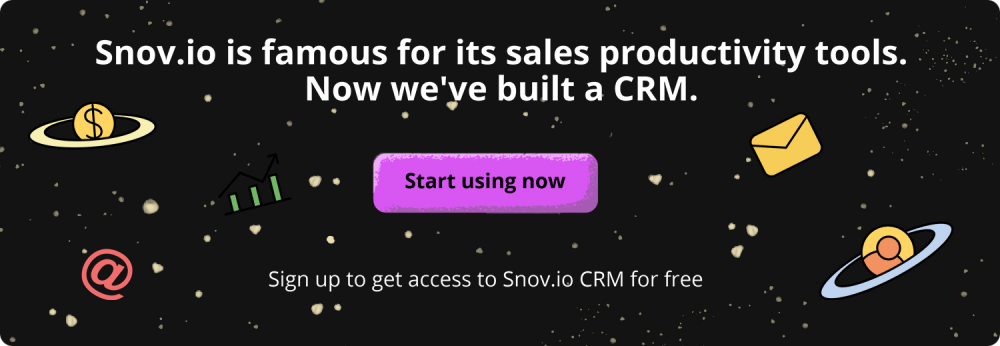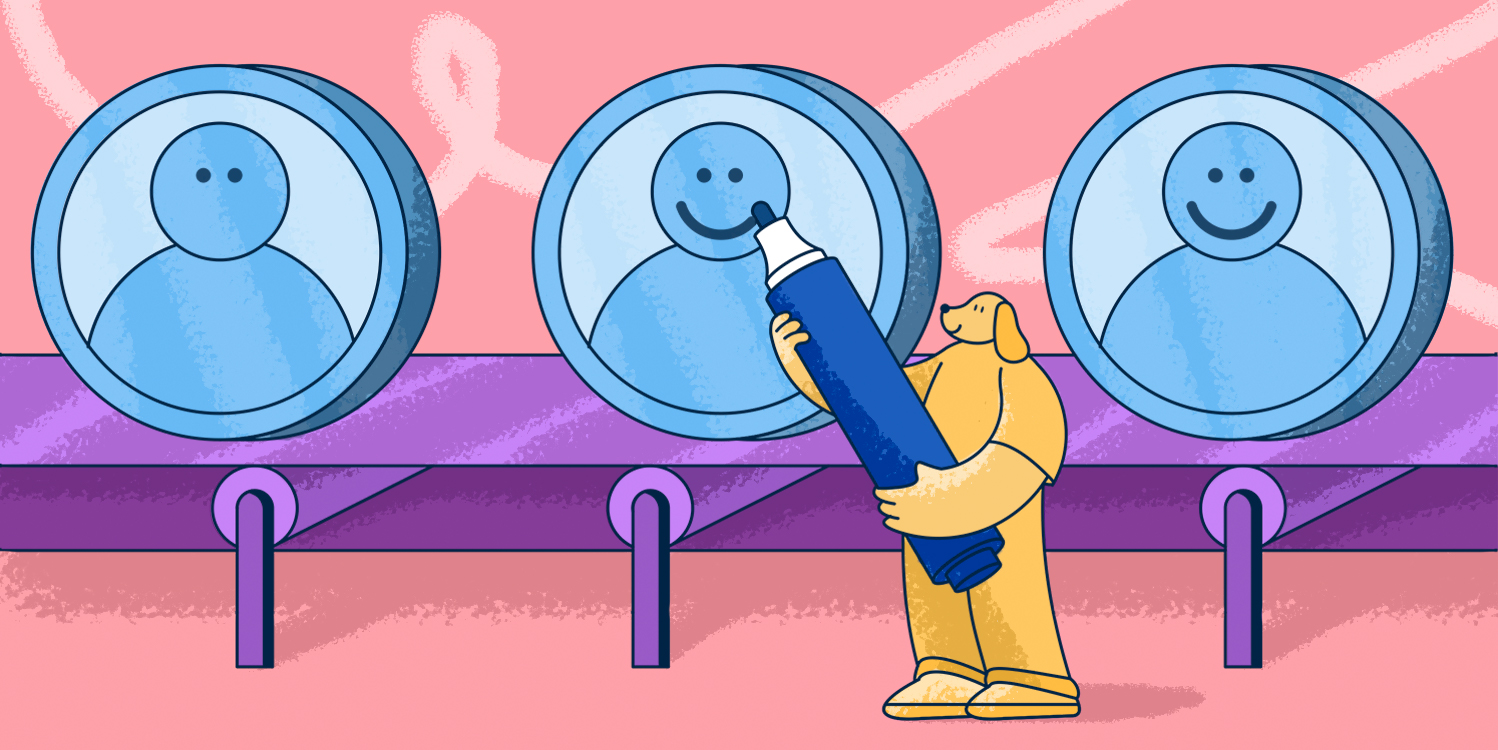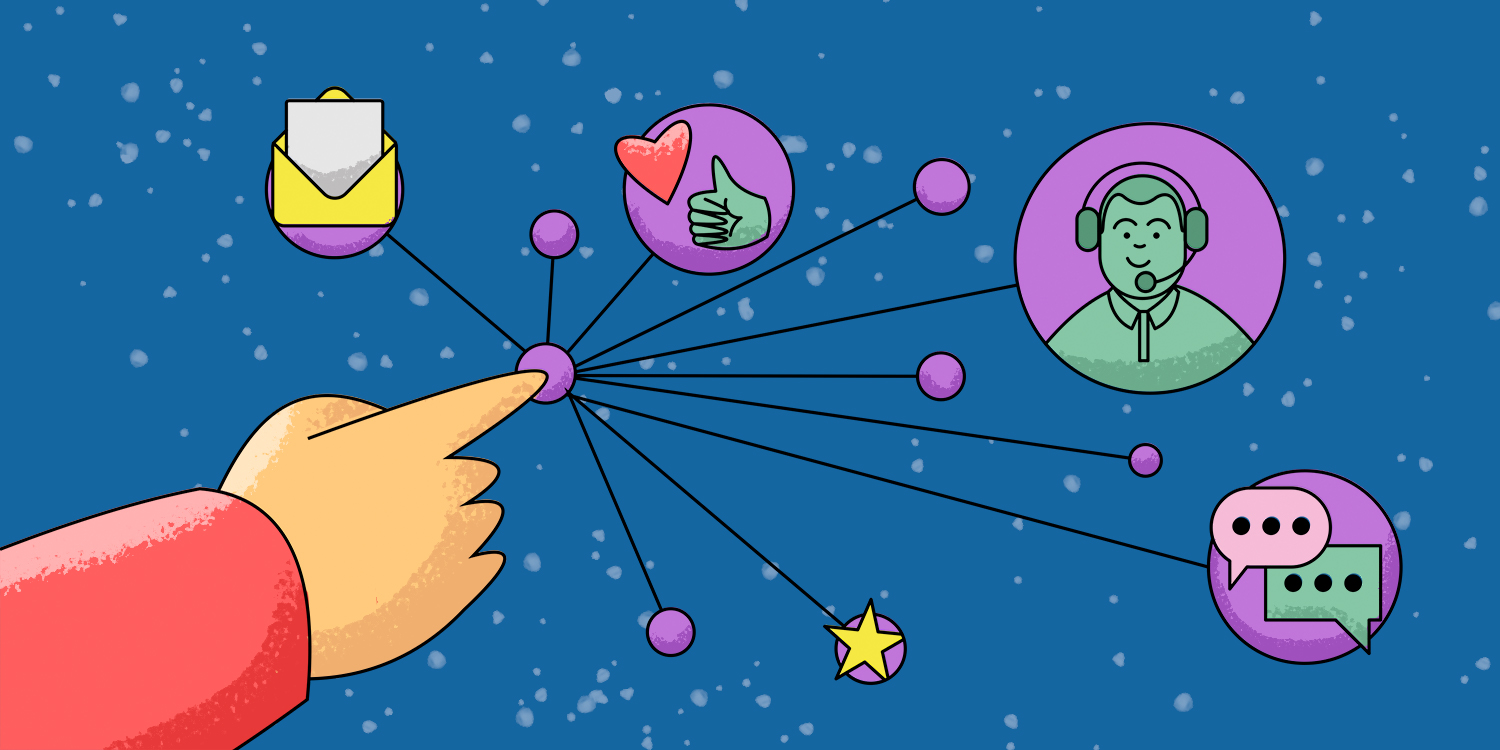Achieving success in sales doesn’t start with picking the right sales strategies. It starts the moment you’re looking for your perfect customers, those who will be most likely to buy your solution. And that’s where an ideal customer profile (ICP) comes to the aid.
What is it, why you need it, and how to use an ICP — your quick practical guide to your next favorite lead gen technique is here.
Outline:
What is an ideal customer profile?
An ideal customer profile, or ICP, is a term used to define a hypothetical perfect company that would benefit from buying your products/services, thus generating the most significant part of income for your business.
Using an ICP, marketing and sales teams can better direct their lead generation, nurturing, and conversion efforts towards the profiles that will guarantee recurring revenue.
What is the difference between ICP and buyer persona?
Although similar, ideal customer profile and buyer persona are concepts with different practical usage.
What unites these terms is that they both describe your buyers based on the market research and the analysis of collected data like firmographics, customer lifetime value, number of decision-makers, customer feedback, etc. Both ICP and buyer persona revolve around your market knowledge, product/service, and the problems it solves.
However, the line you should draw between these two concepts lies in the following:
- A buyer persona is a generalized description of people who buy from you, which comprises such characteristics as gender, age, profession, and other information related to objectives, desires, and lifestyle. In other words, you need a buyer persona as a sketch of characteristics to better understand your customers and come up with the right approach at every stage of the sales funnel.
- On the other hand, an ideal customer profile is used by businesses at the beginning of the sales funnel to filter their B2B lead generation activities and target only those companies that are most likely to become customers.
To have a complete idea of the relation of these two concepts to each other, think of it this way:
An ideal customer profile explains what companies you should target, whereas a buyer persona helps you better understand how to do this.
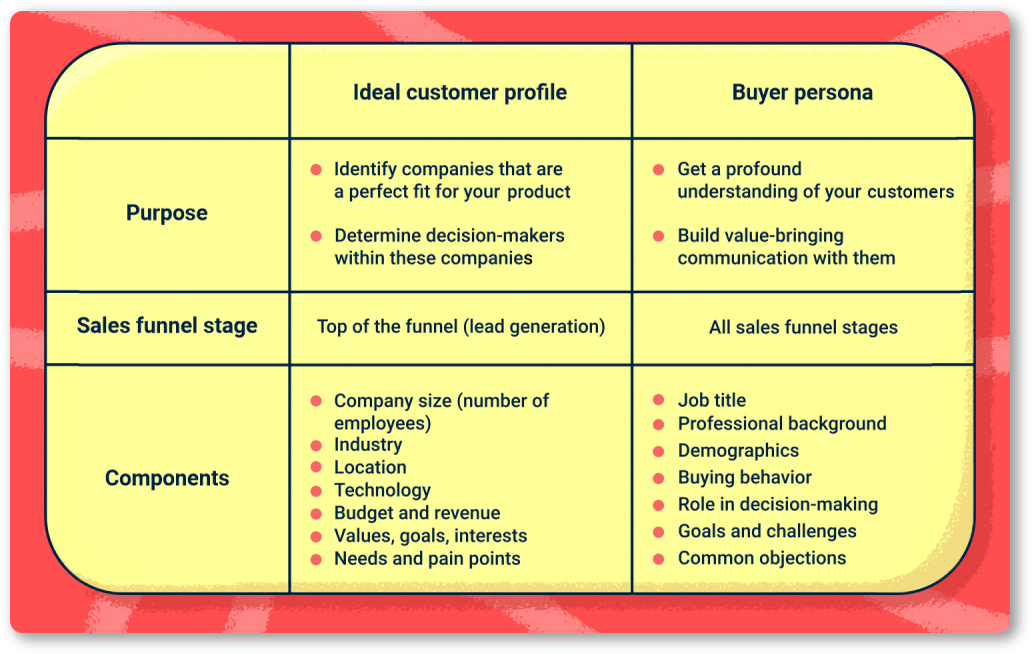
Why is an ICP important?
One of the main advantages of using ICP in your marketing and sales strategy is the possibility of increasing the return on investment to acquire new customers and reducing customer acquisition costs.
When the ideal customer profile is used to drive sales, it allows your company to make more targeted investments in leads that are most likely to close. This will remove the external hurdle of approaching the wrong customers and help keep sales success under the control of the team.
Ideal customer profile framework
Before diving deeper into the process of creating an ICP for your business, let’s stop at the main elements of the ICP you’ll need to consider for building a more specific profile. This information about the ideal customer will constitute the ICP framework for you.
Needless to say, ICP development is different for each company and depends on its goals and its offer. We’ll provide you with a general framework you’ll be able to adjust to your business needs.
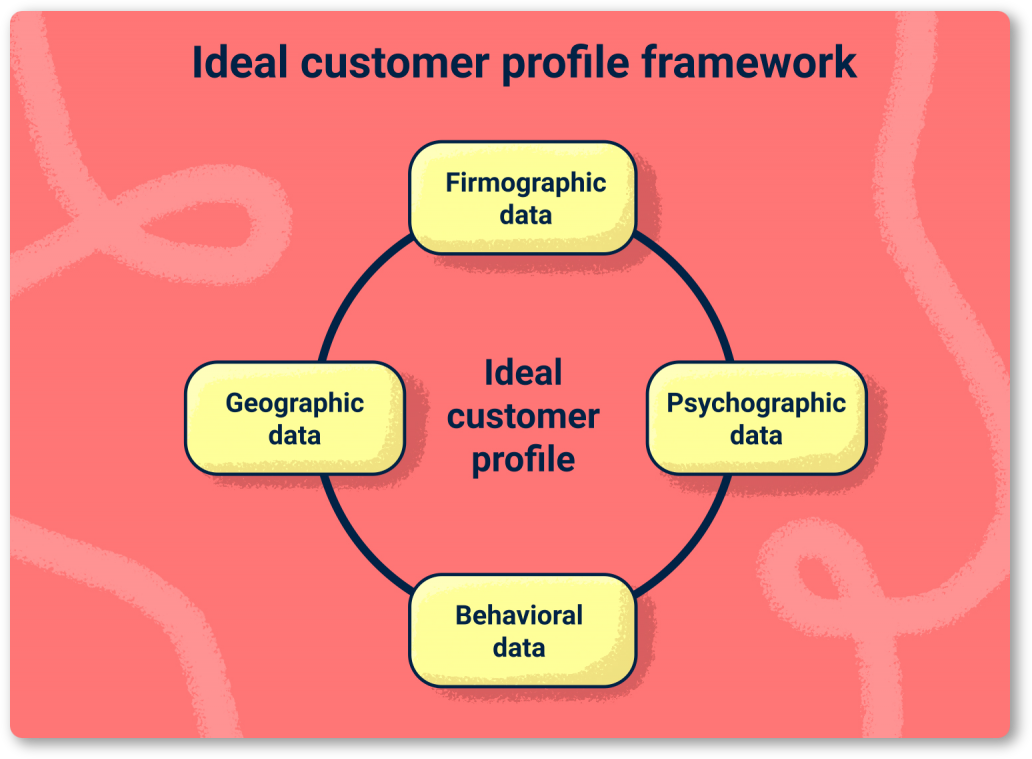
Firmographic data
Similar to demographics, this data represents the basic portrait details of your customer, though, pertaining not to individuals but to the companies you’ll want to include in your prospect list. Firmographic data consists of the following points:
- Industry type — What industry your ideal customer operates in?
- Company size — How big is the organization? How many employees does it have? How many offices are there?
- Budget and revenue — What is the company’s annual budget, and how much revenue does it get? Can this company afford your product/service?
- Ownership framework — Is the company a public organization or a private business?
- Growth trends — Is the company a growing startup or a mature business figure in the market?
Psychographic data
Firmographics aren’t enough to understand your ideal customer. You should also have a vision of how the prospect you’ll be targeting will make their purchase decision. And that’s when psychographic data comes in handy. It includes the company’s:
- Goals
- Values
- Interests
- Needs
- Pain points
This information is crucial for your future sales as conversions will directly depend on whether your product/service brings value to your customer, corresponds to their needs, and helps overcome their pain points.
Behavioral data
While psychographic data allows you to understand your customer needs and problems, behavioral data gives you a vision of how your potential customer behaves to satisfy their needs and solve their problems. Here, consider such factors as the customer’s:
- Product use
- Purchase history
- Decision-making process
- Level of satisfaction
- Loyalty or account age
Geographic data
Even though for SaaS organizations, geography boundaries have now gone blurred as they can successfully offer their services to all businesses worldwide, after analyzing your current customers, you’ll see the companies from what regions contribute to your sales growth the most.
How to create an ideal customer profile?
Now let’s go over the main steps of building your ideal customer profile.
Step 1. Focus on a problem your product can solve and your best customers
The first step will depend on whether you’re just starting up your business or have existing customers happy with your product.
If you are just at the beginning of your path, the primary thing is to first think about your product, the problem it is solving, and the customers who face this challenge. Here, you can consider a GRASP ideal customer model, the acronym standing for the main traits your perfect customer must possess. Namely, they should be:
- Growing — The company you describe as your ideal customer should constantly be developing and have the potential for upsells.
- Ready to buy your product — It has identified its need for a solution like yours.
- Able to buy your product — It has financial resources and can afford to buy your solution.
- Skilled — It has at least basic knowledge of how to use a solution like yours for its needs.
- Profit-gaining — This is the most significant trait as it shows the customer can get real value from your solution.
If you already have a customer base, you should concentrate on your happiest customers. Use client services or CRM data and ask yourself a few questions to identify a list of customers who truly love your product/service:
- Who places the biggest value on your product?
- Whose sales cycle was the shortest?
- Who among your customers has the highest satisfaction level with your product?
- Who has stayed with your company the longest?
Step 2. Define common attributes of your best customers
After knowing which customers brought the highest profit to the company, whether based on high average checks or a high recurrence in sales, it’s time to track their common characteristics.
Here are some of the critical attributes for you to highlight:
- Industry segment
- Location
- Size and budget of the company
- Period of business existence
- Details about decision-makers
- Needs and pain points
Knowing what unites your best customers will give you insights into the uniform portrait of your ideal customer.
Step 3. Gather customer feedback
Okay, you have a hypothesis, but you should rely on facts, right? At this step, you need to switch on all your communication power and ask your best customers for short feedback.
You can schedule a phone call to interview clients who have similar profiles to find out more about their needs that can be solved with your product, as well as how they are making their purchase decisions.
Alternatively, you can also arrange an email drip campaign and embed an email survey aimed at getting valuable feedback from your best customers.
Some of the questions that’ll help you know your best customers better:
- How long do you research and compare information before committing to a purchase?
- Do you rely upon any referrals or references while looking for a solution?
- How did you get to know about our company?
- Who makes buying decisions in your organization?
- Do you need approval from a board to make a purchase?
- What was the main factor that made you buy our product/service?
- What makes you keep using our solution?
- What problems does our product/service help you solve? How exactly?
Step 4. Build a behavioral profile of your ideal customer
With the collected data at hand, extend your knowledge of your customers you’ve got in Step 2, trying to find out what common patterns of behavior your best customers have. In particular, ask yourself:
- What economic, social, and probably political factors influence their purchase decision?
- What usually prevents them from buying a product/service?
- What sales objections do they commonly have?
- At what point are they experiencing challenges, and how can you help?
- Are they active on social media so that you can reach them there?
Step 5. Complete a B2B ICP template
Now that you’ve gathered enough information and analyzed the common attributes, fill in an ideal customer profile template. We’ve created a template table for your convenience. Feel free to copy it for your purposes. Use the ideal customer profile example we’ve provided in Column 2 as a guide:
| Ideal customer profile template | ||
| Factors | Example | Your ICP |
| Industry | B2B SaaS | |
| Location | USA, China, Canada | |
| Size | 50-10 employees | |
| Growth level | Startup | |
| Budget | $500-1500K | |
| Business objectives | -To grow their customer base 50% each coming year -To become the top web design service in 4 years |
|
| Pain points | -They don’t have a systematic approach to all business processes -Cold email outreach has a low reply rate -They have a relatively low brand awareness -Marketing and sales are not aligned |
|
| Decision-making factors | -They make decisions based on facts, testimonials, case studies -The decision-making is made by a team of top managers, not just by the CEO |
|
| Channels for outreach | LinkedIn, email | |
Step 6. Bring your ICP into action
Have your ideal customer profile all polished up and ready to use? Let’s get to the prospecting part, then. The ICP lets you look at your new prospects and analyze them based on the main points of your ‘checklist.’
Let’s look at an example of how you can bring your ICP into action.
With Snov.io, you can find perfect leads based on your ICP in two ways: with Snov.io + LinkedIn Sales Navigator integration or using Snov.io Database Search.
1. Finding leads with LinkedIn Sales Navigator + Snov.io
Go to your LinkedIn Sales Navigator page and filter your search results according to the parameters of your ICP. LinkedIn will automatically generate a list of contacts.
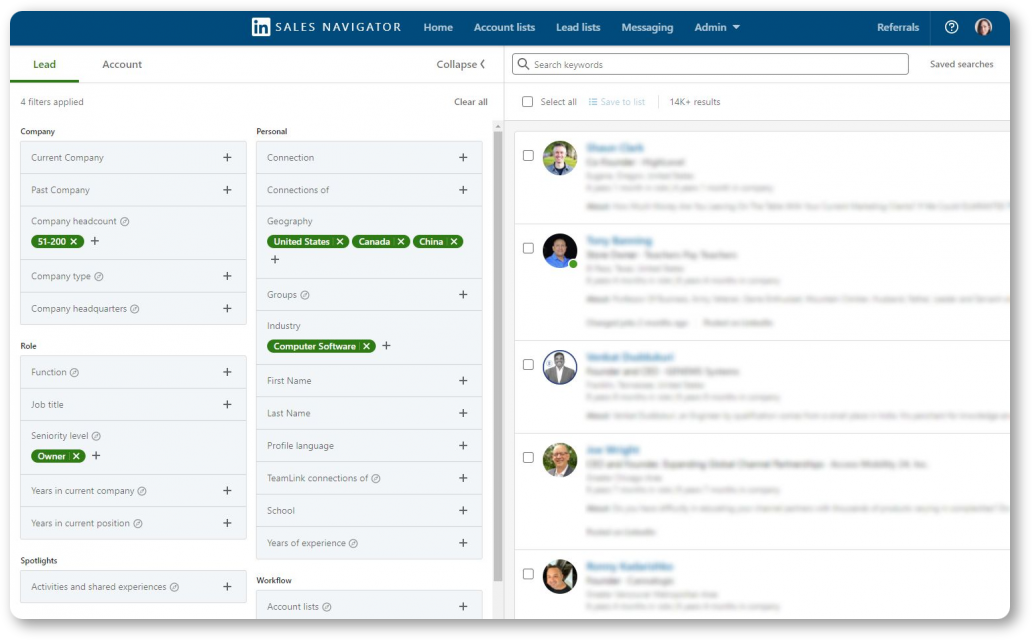
As soon as you’ve found leads that fit your ICP, use the free Snov.io LI Prospect Finder extension to collect the contact details of the target leads.
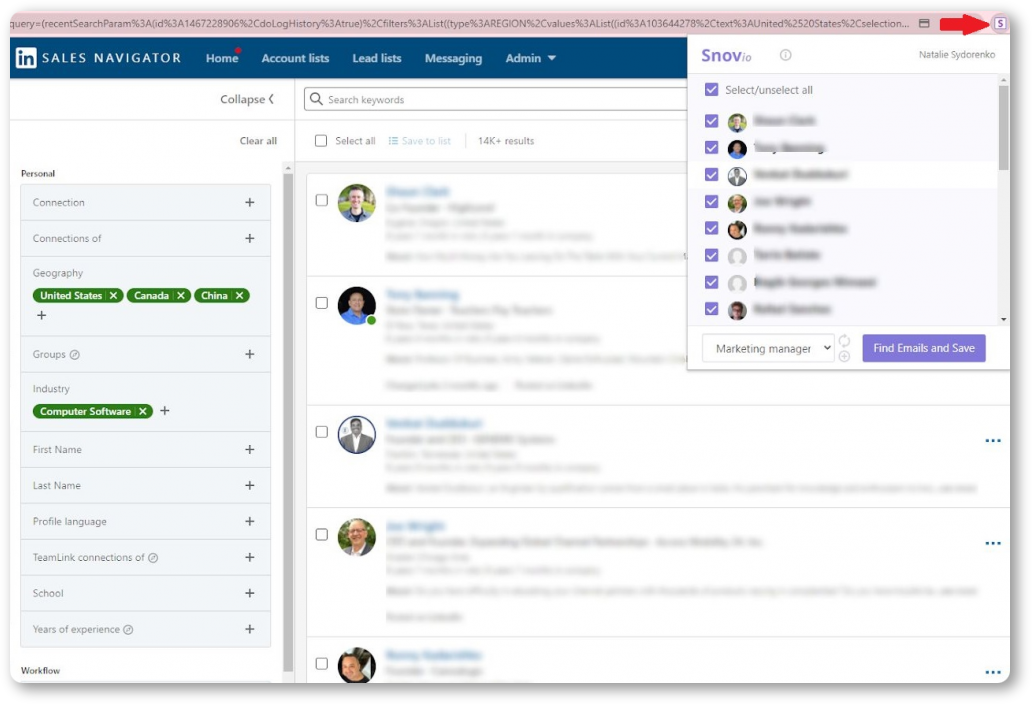
2. Finding leads with Snov.io Database Search
Alternatively, you can find the companies that fit your ICP with the Snov.io Database Search feature. Find it among other Snov.io email finding search options in the menu on the left and fill in the necessary filters for a more specific lookup:
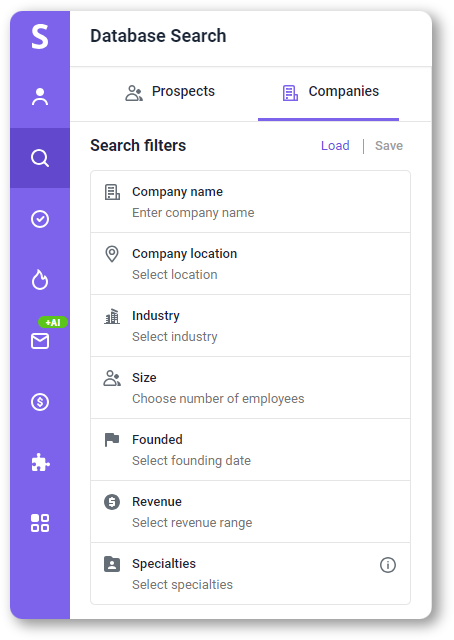
Snov.io will generate a list of companies that correspond to your search parameters. Now tick those that you need and add them to your Company list.
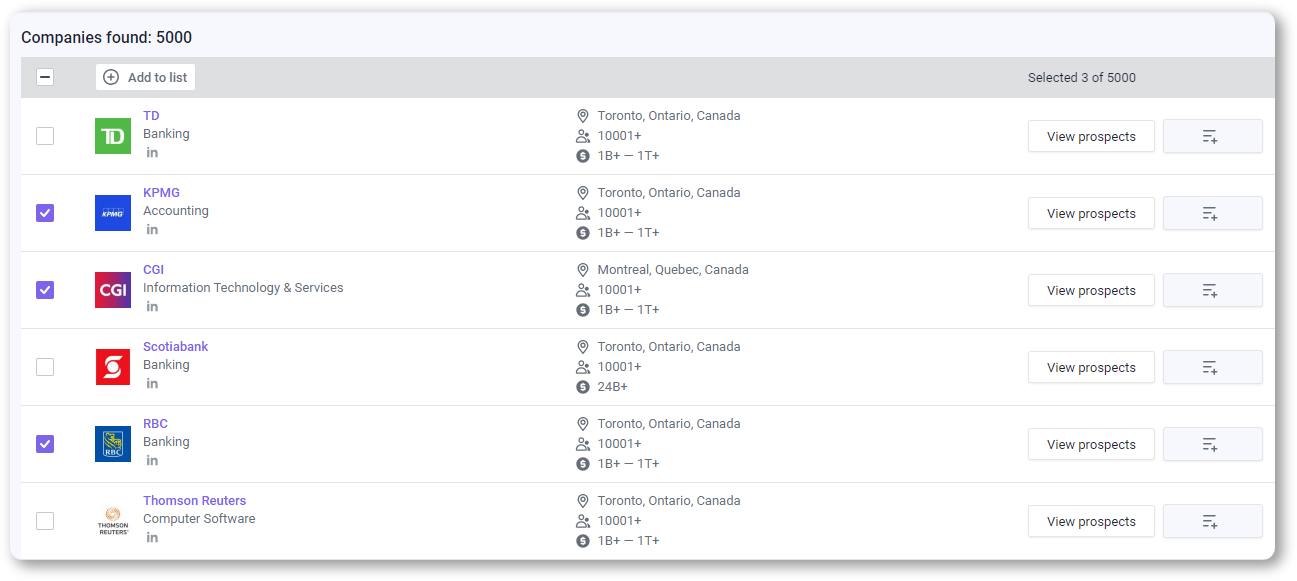
You’ll be able to look into the profile of each company within your list and see their contact details (including the contact details of its employees!).
Bottom line
The ideal customer profile outlines all the best features of your target audience. It helps you generate quality leads and contact the decision-makers of your target companies on the right platform, at the right time, with the right message.
For instance, if you’re a New York web agency, understanding this profile ensures you’re reaching out to businesses in the city that truly need and will benefit from your specialized services.
The market and customer behavior might be slightly changing with time. So, after creating your ICP, you’ll be making updates from time to time to ensure your ideal client description is always relevant.
And if you need to accompany your ICP with a reliable set of tools for effective lead generation and outreach, Snov.io is always ready to help.

